free to be able to rate and comment on reports (as well as access 1:25000 mapping).
Well, I am not really a naturalist, I "borrowed" the thread title from Dr Frank Fraser-Darling's 1939 book about his stay on North Rona. Right, this thread is about
North Rona. I had prepared our trip to Rona with another of his books, "Island Years" which I found in our cottage on Scarista but the title was too generic for a thread so I picked "the Naturalist"

But let's start at the beginning: I would never have dreamt of ever setting foot on this most remote of all rocks (bar Rockall) in the British Islands. But when I planned our holiday on the Hebrides, my eye fell on the trip schedule of a boat trip operator based in Miavaig, Lewis. I read "North Rona trip" and quickly sent them an email to inquire whether there were any places available. There were and so the booking was made. Still, I knew the chances that the trip was really going to happen were 50% at the best, as good weather is needed and that for the whole day, as the trip takes 4 hours out and 4 hours back.
As the date was approaching, I was constantly checking Metoffice.co.uk just to find out that the forecast changed hourly and the only thing to do was to wait and see how the weather would develop and wait for the phone call of the trip operator the night before the trip. The call came and it was favorable. We were defnitely going to Rona!
We got up really early that day as we had to be at Miavaig pier at 7:15 am. Take off was scheduled for 7:30. All of our group of 12 participants were on time and so we set off at 7:30 sharp. We were on board of the Lochlann, a small but powerful boat with indoors and outdoors seating. The boat wound its way out of Loch Roag past the Old Hill and then drove all the way up parallel to the Ness of Lewis until there was no more land to be seen. The trip was most pleasant as the sea was dead calm and the sky blue with a few clouds. For a long time, it was just us and the sea, until we cought a glimpse of the island.

North Rona is the most remote island in the British Isles to ever have been permanently inhabited. But we were not directly heading towards Rona, we were going to visit her nearest neighbour first: After three hours, we reached Sula Sgeir, the sea stack 11 miles from Rona, which has never been inhabited but is visited once a year by a party of Ness men to harvest their portion of Guga, young gannets. For further information, I recommend the book "Sula: Seabird Hunters of Lewis" by John Beatty. Anyway, there we were, approaching Sula from the south:

It seems that some of the best hunting grounds are near the lighthouse:


The southern part of Sula:

This is joined by a headland where, according to legend, St Ronan's sister, Brenhilda, is supposed to have stayed for some time, leaving him on Rona, only to be found dead in a bothy with a shag’s nest in her ribcage. That would be the headland on the right:

Turning around the headland to the landing place in the north east of the skerry, surrounded by gannets, the solan geese (Sula), giving the skerry (Sgeir) its name:
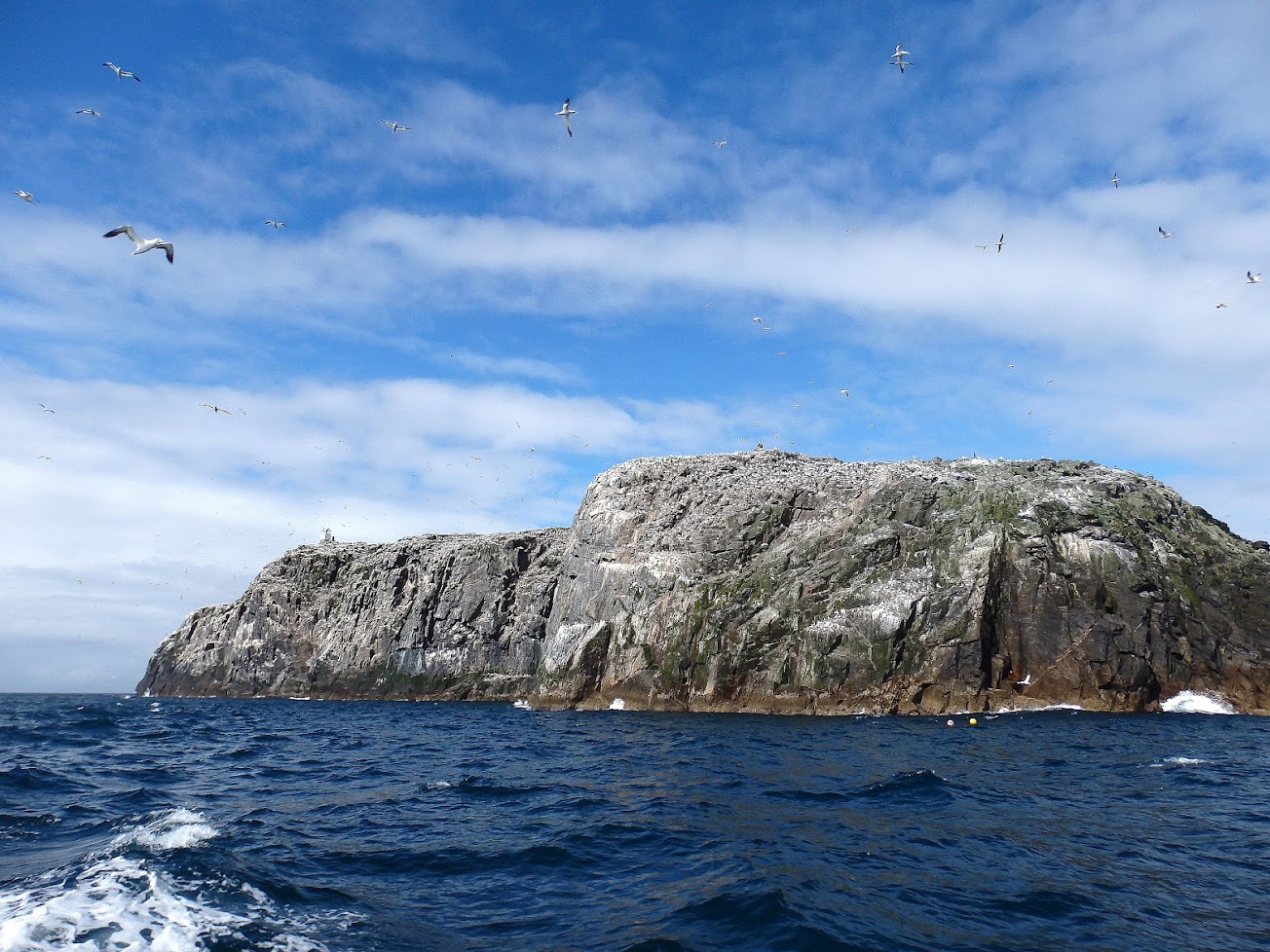
Looking south from here, you see lots of cairns on the heights of the island. This is were the guga hunters stay in stone bothys and each one of them has a cairn:


In this north eastern part is the landing place. I am not quite sure where exactly but somewhere on this part of the cliff (I think on the left side of the photo), the men land and climb up to the high ground and also haul up two weeks worth of supplies and at the end of their stay, somehow bring down their catch of 2000 Guga.
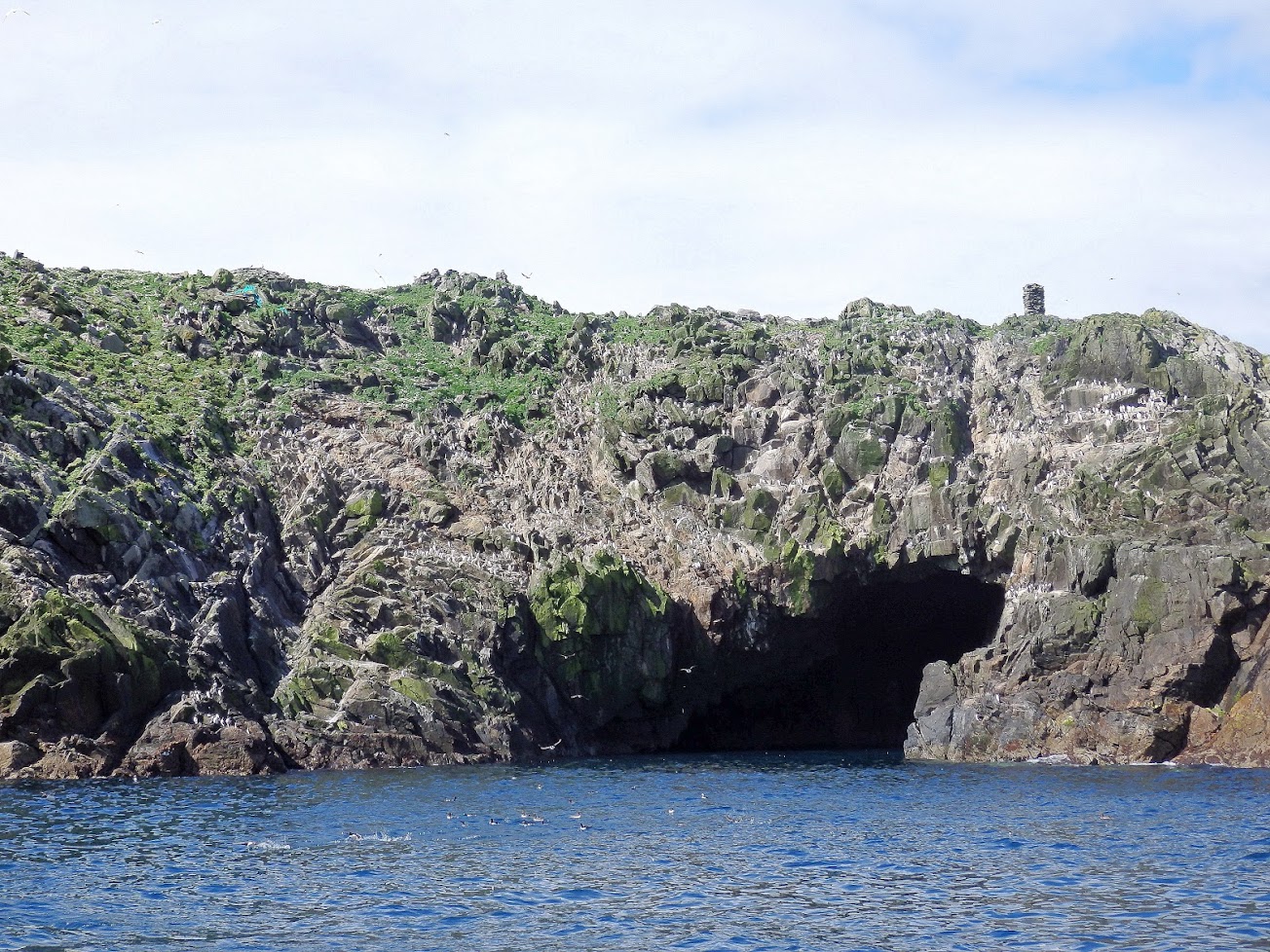

We were not going to land on Sula, leave that to the pros

Instead, we headed off for Rona. Looking back to Sula...
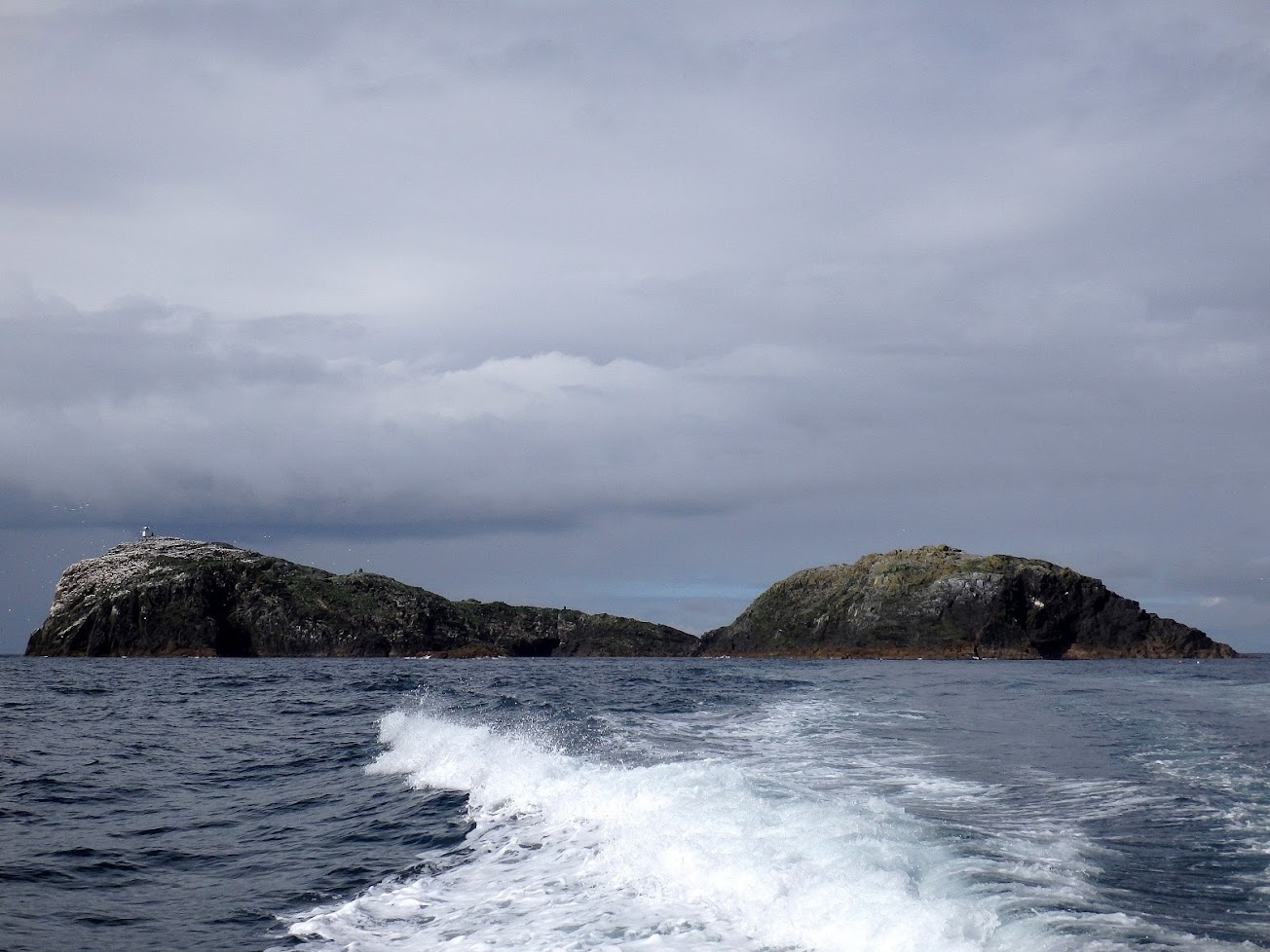

...and forward to Rona, now clearly visible and only an hour away:

Soon we were navigating on the south side of Rona and could clearly observe the remains of the village, on the left, with the extensive cultivation area and the researchers hut on the right on the higher part of the island:
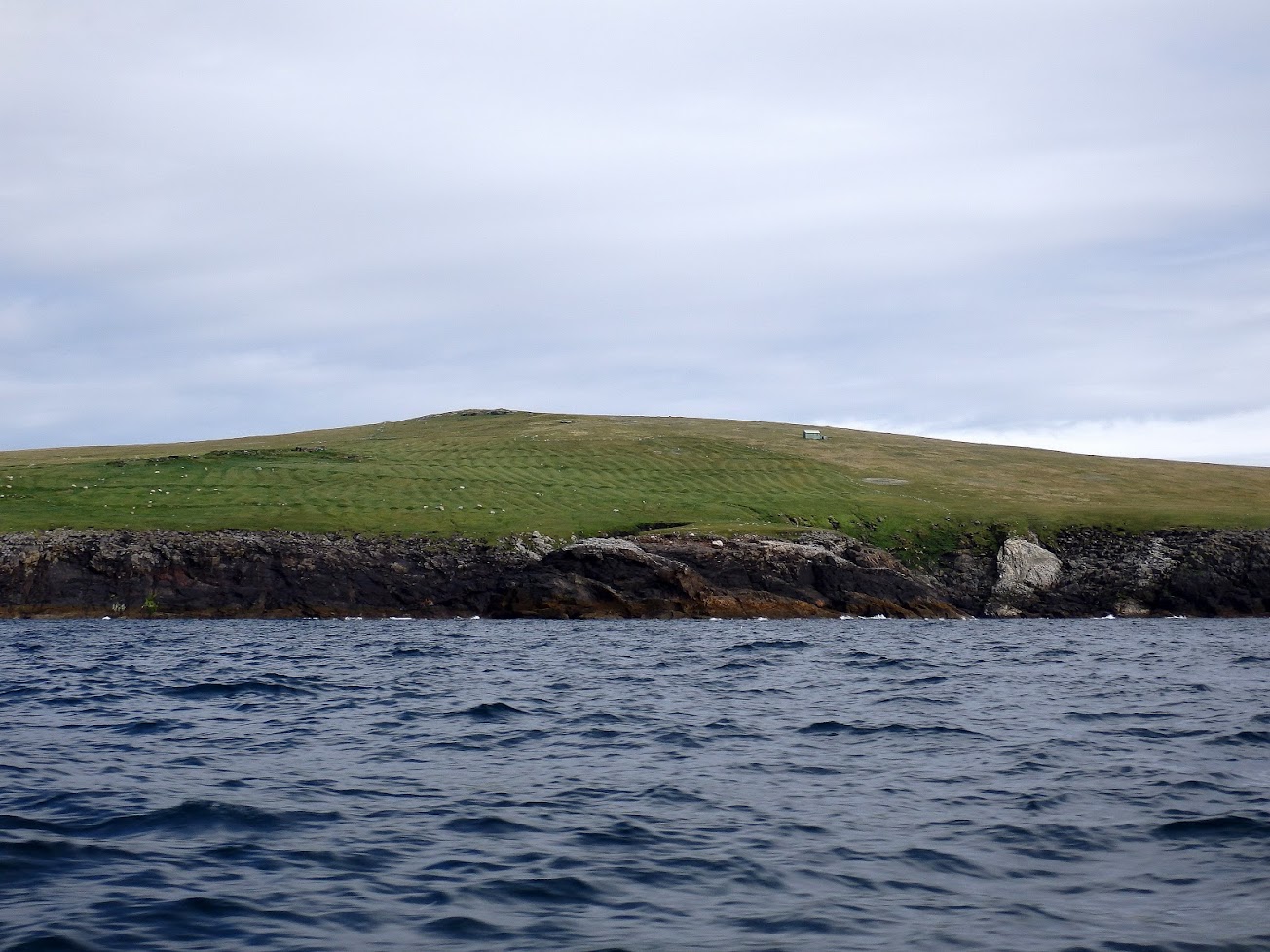
Close up of the village, with St Ronan's Chapel on the right.
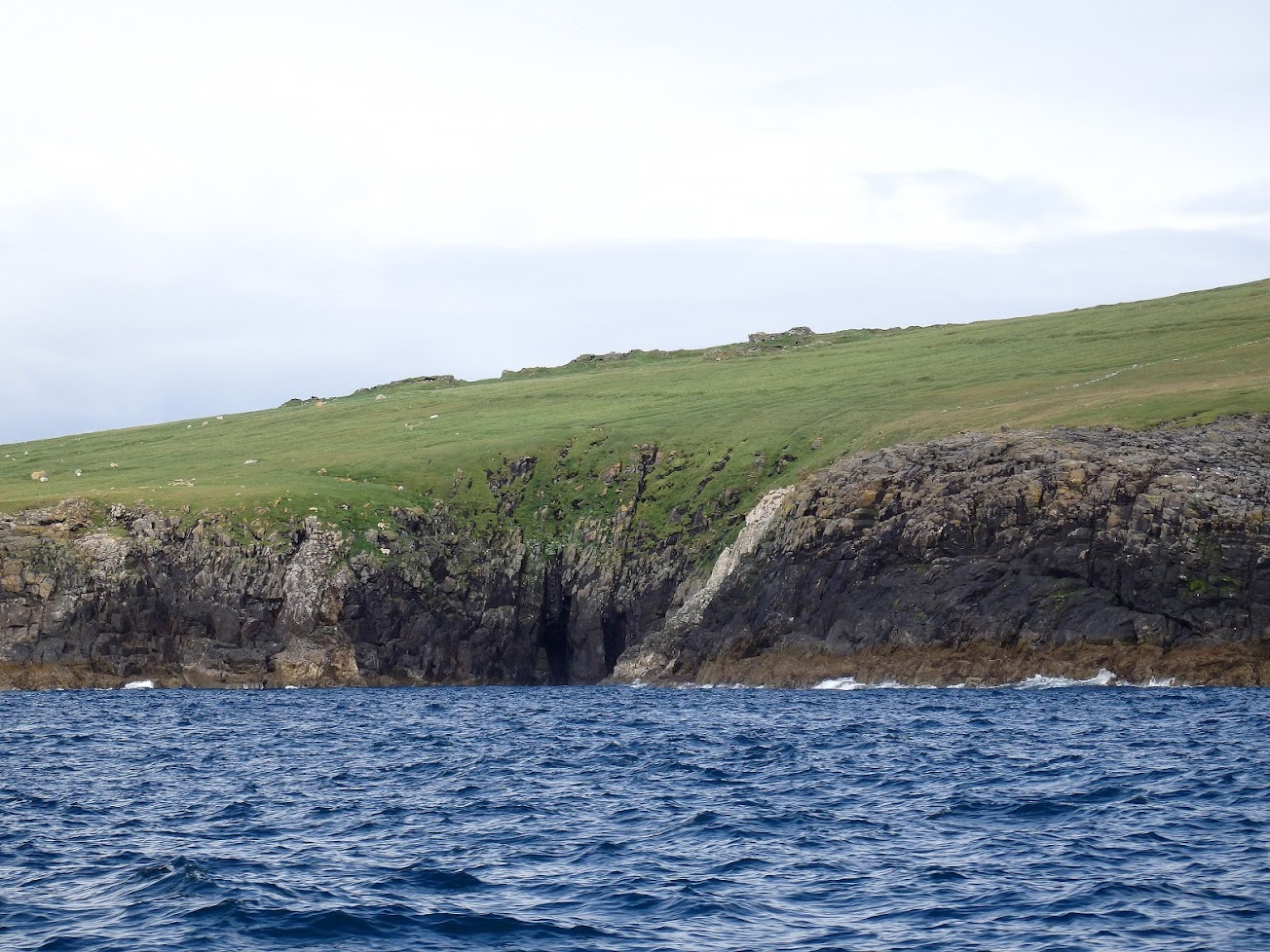
On the western part of the island, on its highest point, sits the lighthouse above some mid size cliffs:

It's not St Kilda or Foula but, from near, the cliffs are not that bad:

We were heading towards the east side of the island, where the chances are best for landing in most winds. Here, you get to see the low lying northern headland of Fianus:

You also see a funny "peak" which is more or less in the middle of the island:

Here's a panorama shot of the bay:

Now came the business of landing. We were put in a motorised dinghy at four people and set out to the low lying rocks on the shore. The skipper let the dinghy touch the rocks with the swell and we then had a few seconds to climb out until the swell sucked the dinghy back into the sea. It was not very difficult but we were happy to make it without slipping.

So, on midday, we finally were there, on North Rona.

Even on this remote island, there is an information board.

But I already knew where I wanted to go first (and therefore, did not read the board): To Toa Rona, the highest point at 108 meters, with the light house. After two failed attemps to pick the right island peak on Shiant and Little Bernera, at least here it was crystal clear where to go, up and then left!



This looks quite flat on the pictures but it is actually quite steep to get to the top of this ridge above Fianus. Views back down to Fianus, with the circular sheep fank:


On the ridge, looking left towards Toa Rona:

Here, a part of the cliff has collapsed. This is the best spot on the cliff for puffin watching:
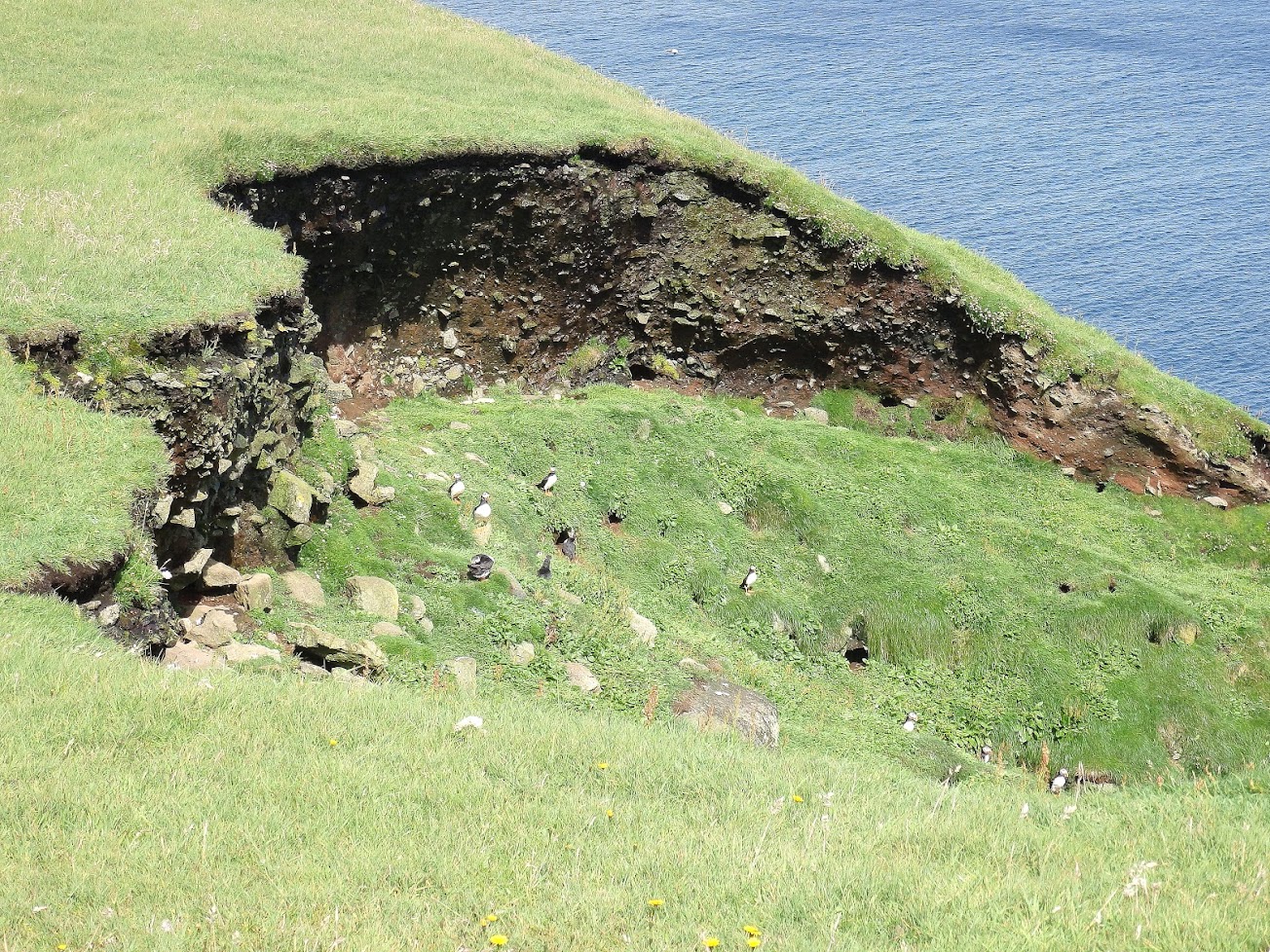
As I had already noticed at Hermaness, Unst, Shetland, the puffins get along quite well with the fulmars:


There are nine puffins on the next photo, can you find the hidden one?


*must.continue.climbing* -> It is always hard to quit the puffins but we had to go up there. Looking back to the puffin cliff, the strange mid-island peak and back down to Fianus:

Soon enough, we reached the Light:

It seems that we disturbed a swarm of birds that did not expect human visitors:

Well, there we were, on Toa Rona with its ancient summit cairn and solar powered light. Old meets new


An appropriate place for a pick nick. The views are something
Looking north (with swarm of disturbed birds) - next stop Feroes:

Looking west, next stop Sula, then America:


Looking south across the helipad. I read somewhere that in good conditions you could see the mainland of Scotland from here but here we were, the conditions were good and I did not see the mainland of Scotland - or did I? On the picture I see the faintest line of black on the horizon:

The pick nick was peaceful but there was still stuff to view so after a moment we headed back down to the main ridge with the funny looking middle peak. I shortly thought about climbing it but it was occupied:
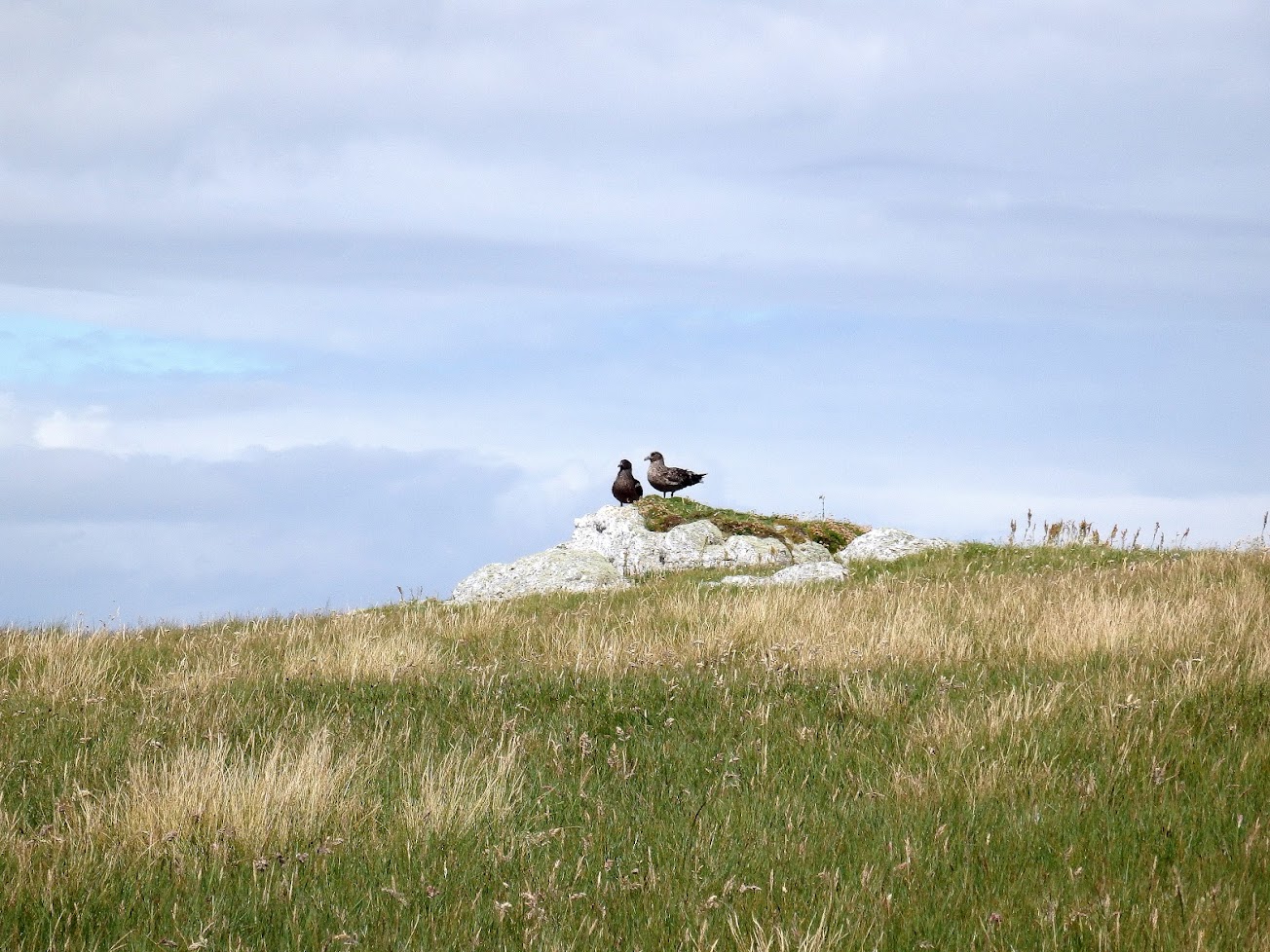
So far, the Bonxies had spared us but this was about to change. In order to get down to the village, we had to cross their territory and soon enough they started divebombing us quite relentlessly. Luckily, we had met them before (e.g. on Fair Isle) and knew how to react. Simply hold up one arm and they will not come too close. Still, an impressive feeling when they swoosh just above your head and you can feel the airstream of their flight. This did not give us a lot of time to take pictures but I got the one looking back up to Toa with the bog cotton on the ground which turned out to be one of the best photos colorwise:

Midway between the central ridge and the village there is the researchers cabin where we met some of our fellow trip participants taking shelter from the Bonxies. It was their first encounter with the Great Skuas and they were glad for my advice to stretch the arm to the sky. In other surroundings we could have been mistaken for neo-nazis walking around with one arm stretched out like that but in a Bonxie territory, it is quite appropriate

The cabin:

The cabin was open and we made an entry in the visitors book lying on the table:

We then continued down to the village. Looking back to the cabin and Toa Rona, with just one Bonxy:

Soon we reached the village boundary marked by a dry stane dyke. Beyond were the lazy beds and the village:

I took quite a few pictures of the lazybeds but they do not show on the photos. They are best viewed from the water and I already posted one photo above and there will be another one later.
On to the village then. As a matter of fact, it is thought that Rona was inhabited for centuries and Ronan's chapel could be from as early as the 7 or 8 century A.D. The village is also thought to date from at least the middle ages and it was permanently inhabited until at least the end of the 18 century. There were never more than five families and around 30 people living on the island. If there were more, they were sent to Lewis. Then, around the turn of the 18 century, some rats from a wreck came ashore and ate all provisions of the islanders. To add to the misery, some pirates stole the only bull and all inhabitants died of hunger. It is said that afterwards, even the rats died because they could not go to hunt on the shore due to the swell.
The island was subsequently resettled but with mediocre success. In the end, only a shepherd lived there, the King of Rona. He left the island in mid 19 century. Afterwards, two Lewismen who ran afoul of the minister came here in 1884 but both died within a year. There is a tombstone in the graveyard remembering them. Afterwards, the only resident staying on Rona for a few months was Fraser-Darling. But enough history, on we go. Above St Ronan's Chapel:
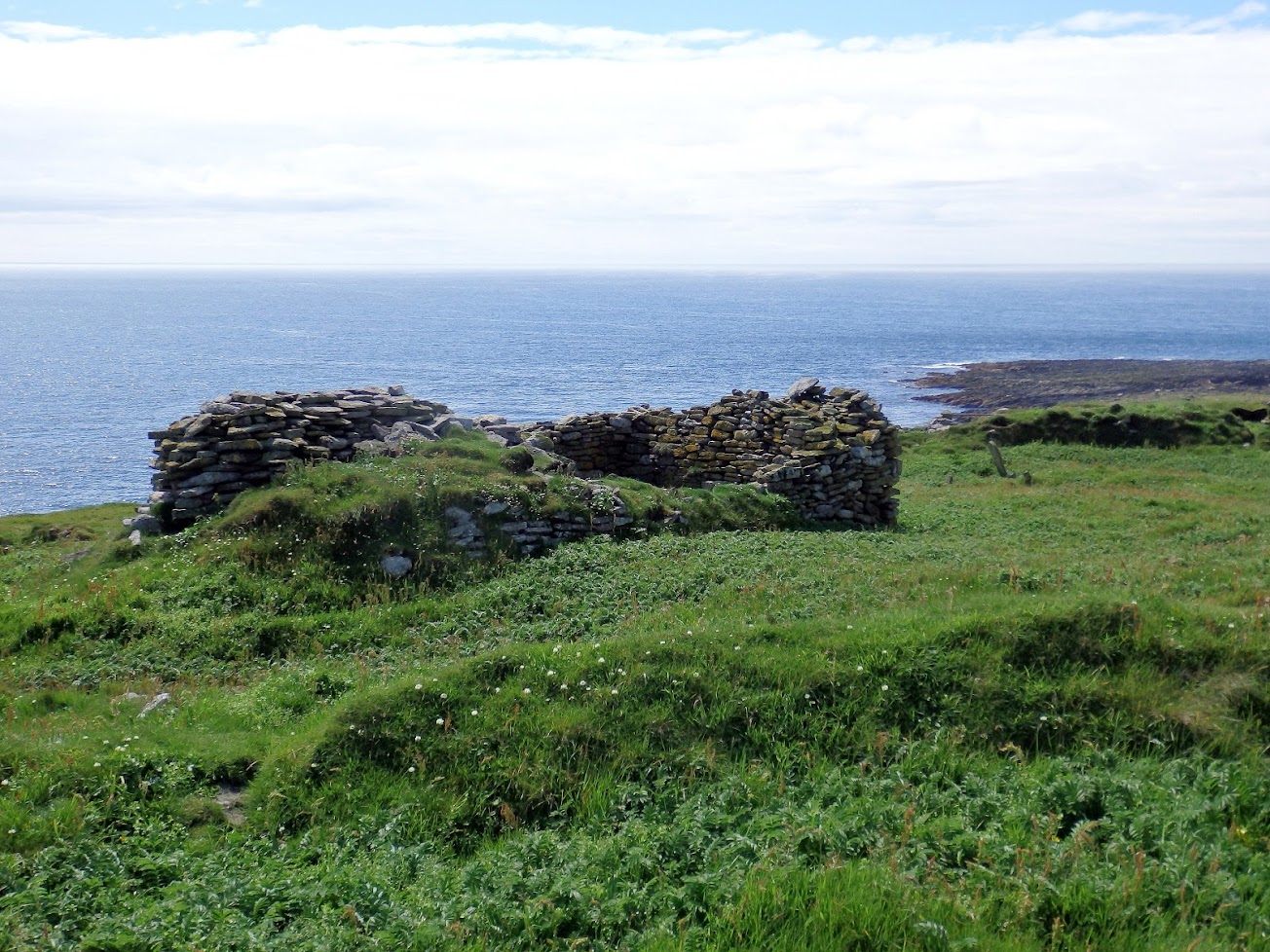
This is actually one of the three oldest unaltered monuments of Christianity in the British Isles! Well, almost unaltered as Fraser-Darling did some re-building during his stint on the island just before WW2. Looking down inside the nave of the chapel from the crumbled north wall. This is the younger and poorer built part of the building. There are tombstones and quernstones inside:

Next to the Chapel is the graveyard with a few old markers and the only big one, the most recent one, remembering the two poor guys who died here in 1885:


Here I am standing at the main entrance of the Chapel, from the south:

You have to bend the knee to get inside but it's worth it as there are more gravemarkers inside, even if the best tombstone from this chapel, the three holed Rona cross, has been removed an is now at Ness in the museum.


In the east wall of the nave is the entrance to the proper St Ronan's Chapel, the old cell of the saint. Yes, it is really low and there's mud on the floor...
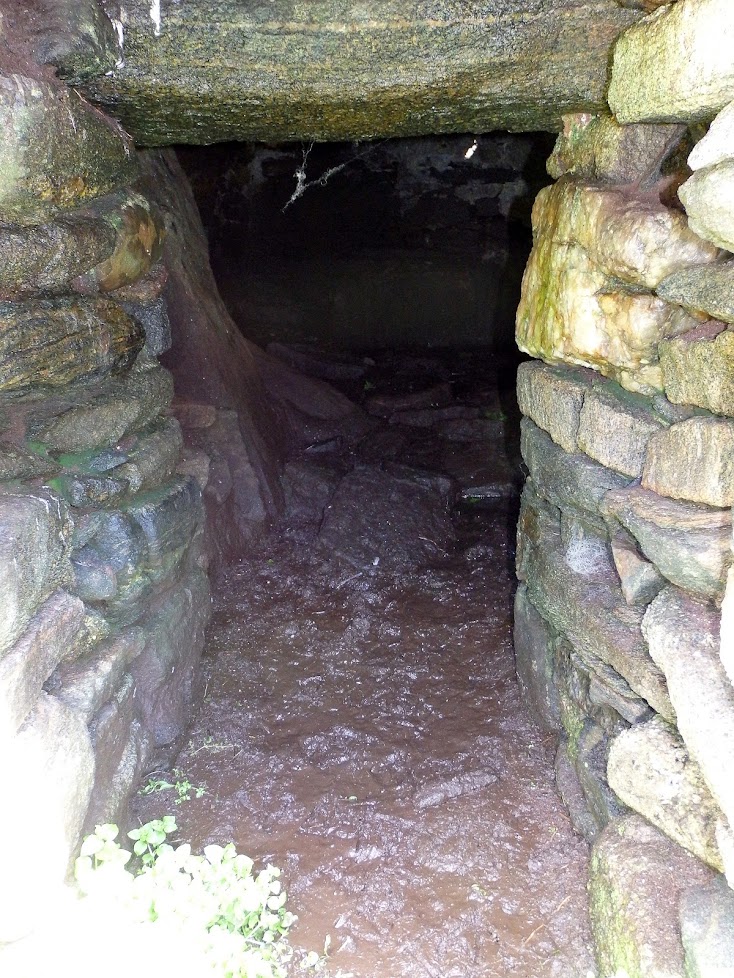
... still I managed to get inside without (i) getting my knees in the mud or (ii) knocking my head on the lintel.

So here I was, inside the oldest cell / chapel of the British Isles. What looks like a heap of stone from the outside and takes some crawling to get inside, is actually nicely built and you can stand upright without a problem:

The altar stone:

Standing inside this chapel is strange, there you are 70 km off the next landfall on a seemingly godforsaken island yet inside a room that has been used during centuries for worship and still withstands the winter storms to this day.

After a short moment of meditation, I climbed back out to the daylight and set off to explore the village. The building immediately adjacent to the graveyard is called the Manse and it is the best preserved building of all. It is a strange building as it is not a traditional blackhouse but resembles another type of building unknown in the Hebrides. It is thought to be the latest building to have been built and used but it is unclear by whom and why. There are some details about this and the other buildings in a publicly available report called "A survey of the antiquities of North Rona". The link is on the wikipedia entry on North Rona.


We found this egg, probably fulmar, in the wall of the Manse:

Below the Manse are the remains of the best preserved of the old houses. It looks (to my untrained eye) a lot like the traditional blackhouses on the Hebrides. From the north, peering inside the door:
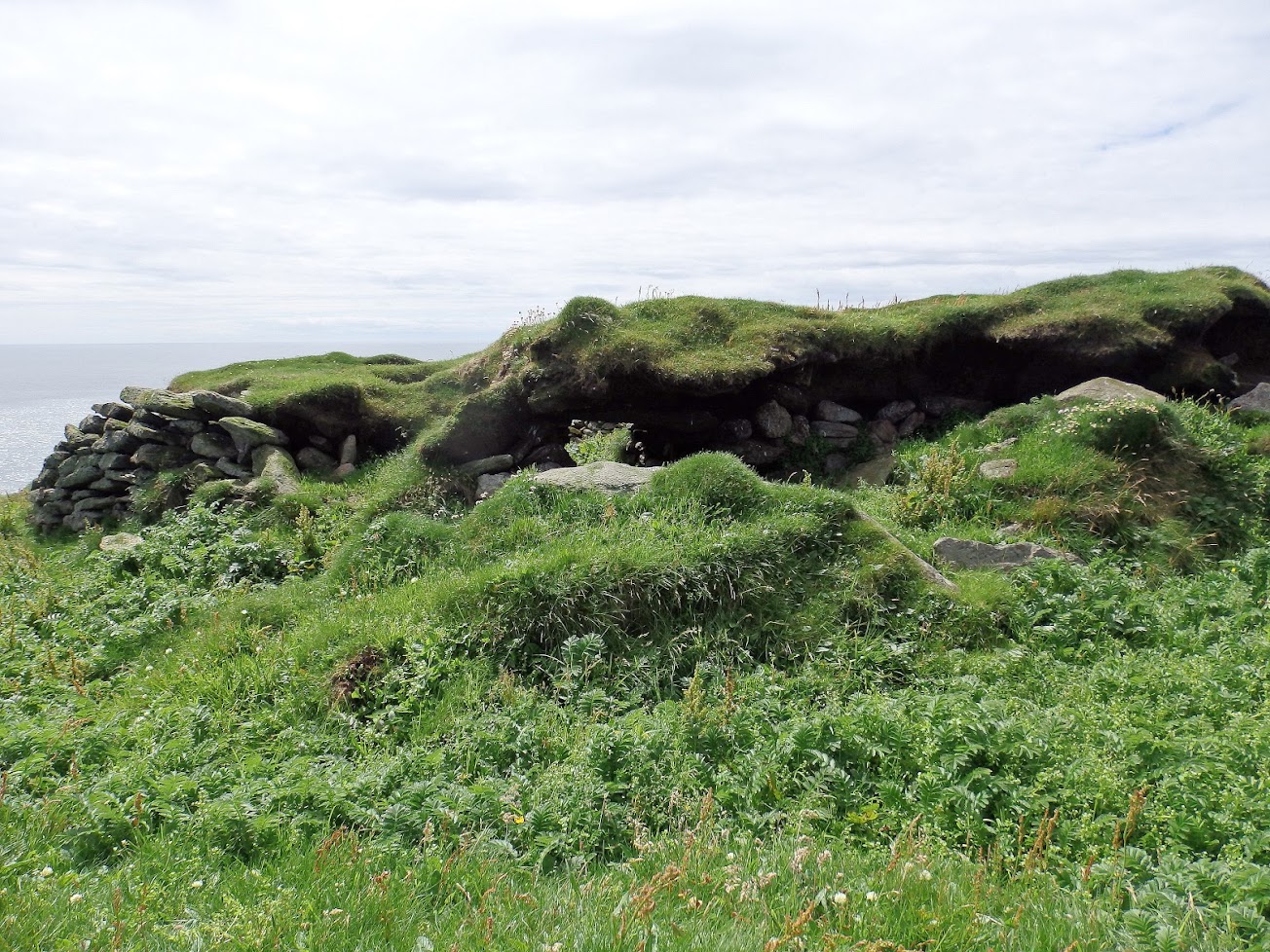
From above, looking down:

From the south, looking towards the door:

Little did we know it was still inhabited:

Here is the view from the "blackhouse" over the village. Just above there are the remains of another house, then above it, the "Manse" with remains of an older structure beneath it and to the right, below the Chapel, the remains of two other buildings. That's all that remains today of this "ancient race of people" described by Dean Munro and Martin Martin in their descriptions of the Hebrides in the 16 and 17 centuries:

So where were we? Climbing Toa: Check. Exploring the Chapel and village: Check. We had still a bit more than an hour at our hands. What to do with it? The answer was: Back to Fianus to see the seals. After all, North Rona is the greatest colony of the grey seal in Britain and after reading "Island Years", I was prepared to see thousands of seals mating, basking, fighting and basically go bananas!
Back down to Fianus, with the ruins of a rectangular structure. Might be the shelter built by Fraser-Darling back in his day:


Our first port of call was Sgeildige, the bay opposite our landing place. And sure enough, there was an old bull taking a bath:


There were also, on the cliffs of Sgeildige, a lot of puffins. So if you get to Rona and want to see puffins, but are too lazy to climb Toa, just walk the 50 meters over to Sgeildige


Fulmar chicks can be viewed as well:

But we wanted to see seals, MORE seals... probably should have read the sign we saw when coming ashore that pointed out that the seals are only breeding come september

Well, we had not read it properly so went in search of thousands of breeding seals, to the north of Fianus. This is the stone bothy within the circular sheep fank on Fianus:
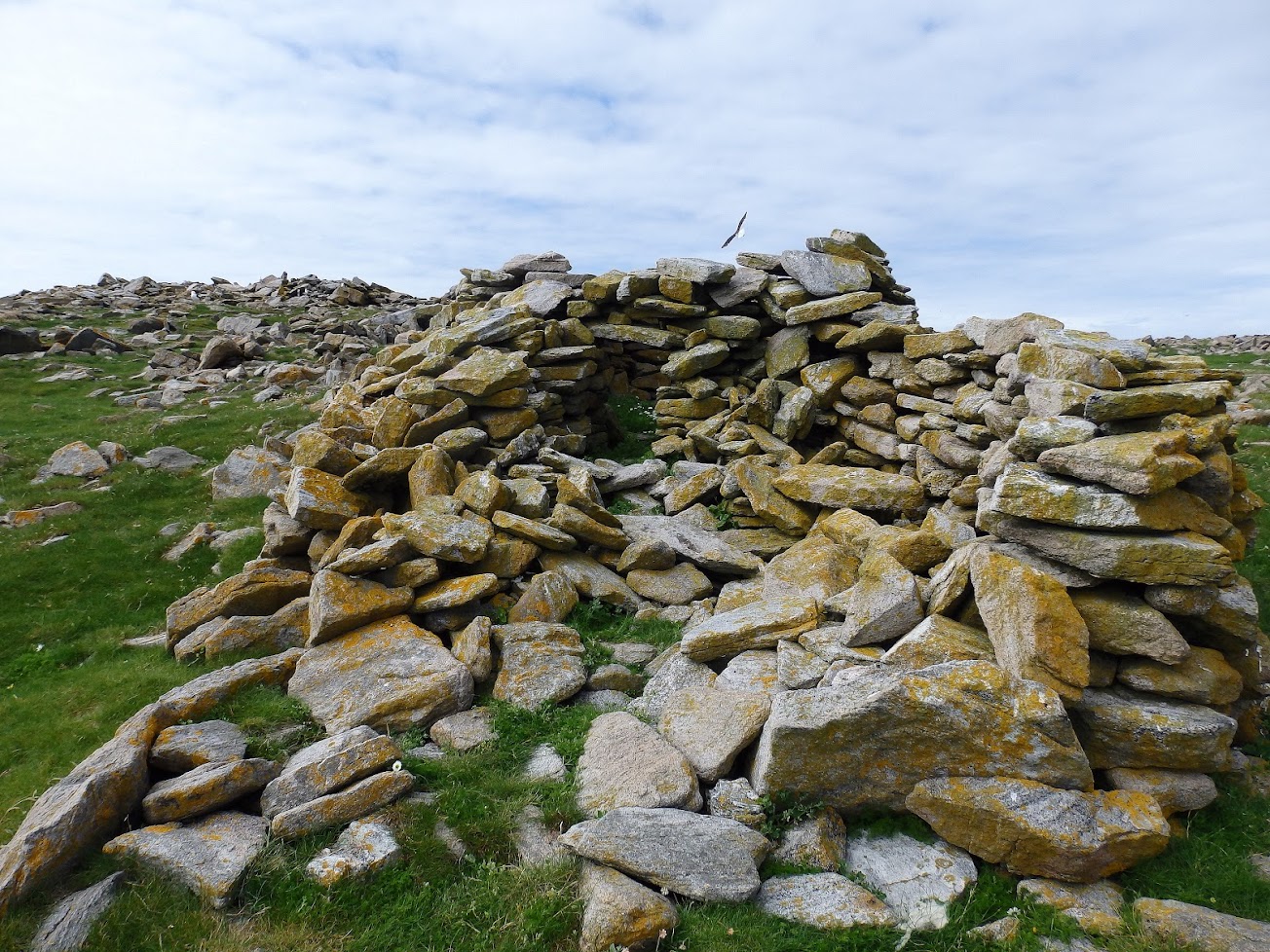
We have been on Mousa last year to watch and hear the storm petrels. Rona is an important breeding ground of both the storm petrel and the much rarer Leach's petrel. Soon enough I heard the signature petrel chirping. I was surprised to spot a petrel in daylinght, undisturbed, with some nesting material in the beak. If someone knows if it's a "regular" stomy or a Leach's, please let me know:

A bit further north, we came across Rona's own shipwreck, or at least what's left of it. It reminded me of a sculpture and it would probably fetch millions if exposed in Tate Modern with a Damien Hirst signature on it:

However, still no seals. We decided to have another pick nick and enjoy the views. Great they were (with and without wreck):


See that grin? This is one island lover having made it to the ultimate thule, the destination of his dreams, satisfied and really, really happy

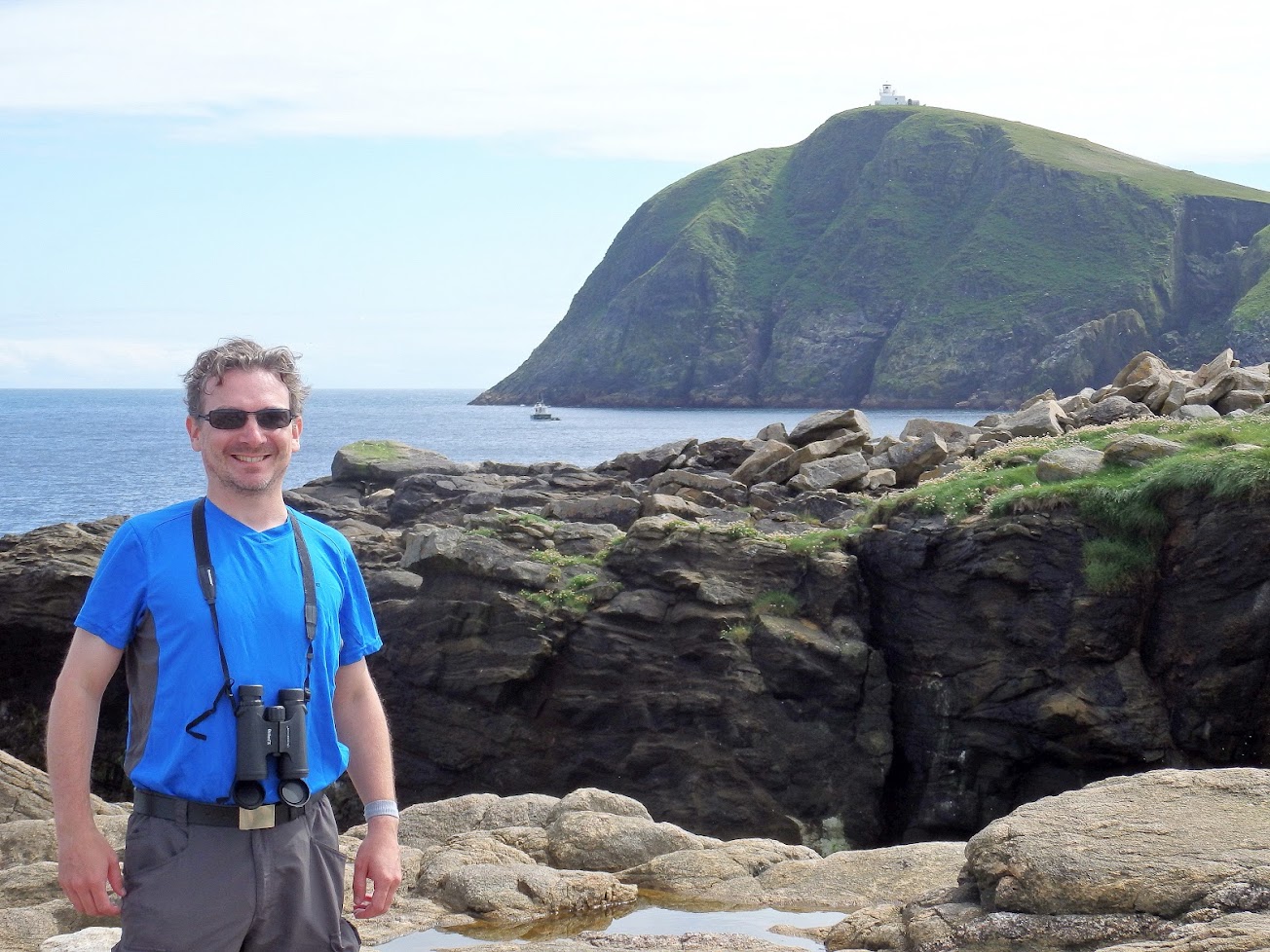
We actually spotted the odd seal swimming in the water but for the greatest colony, the turn out was poor. There were other beasts making up for the elusive seals though.
The three amigos (shags):

Yet another fulmar chick:

And more picture perfect views:
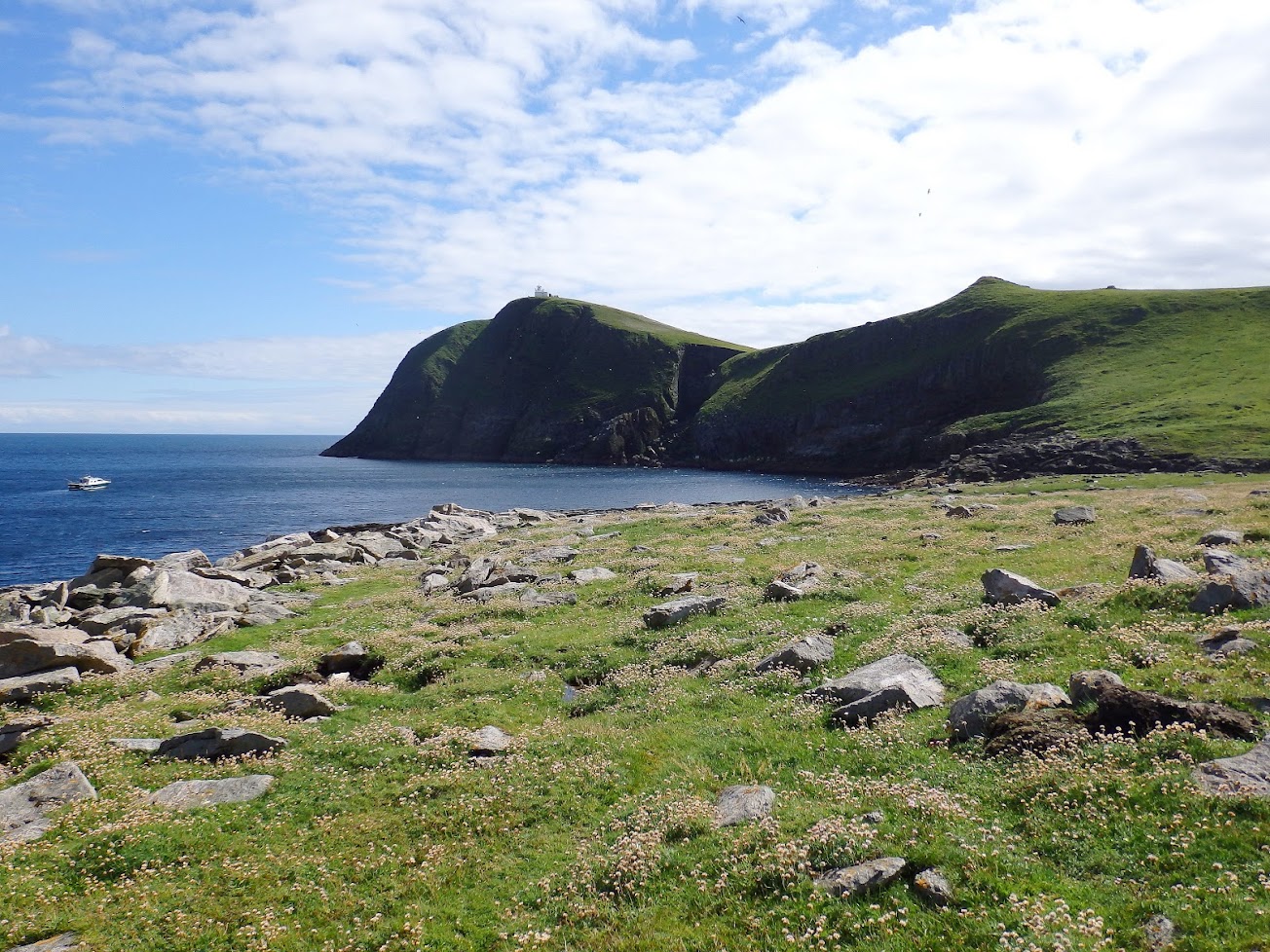
But we wanted the whole enchillada. So we returned to Sgeildige, but went out further than before. And what did we find, basking on the low side of the cliffs? The old bull with his harem:




Granted, four seals is not the world, but it's better than none and it was enough for us. As a bonus, we did get some nice pictures from the "Gloup", the hole running from the Sgeildige deep inside Fianus, where, in stormy weather, the waves break with a great noise (first two pictures are overexposed to let you glimpse inside the cave):

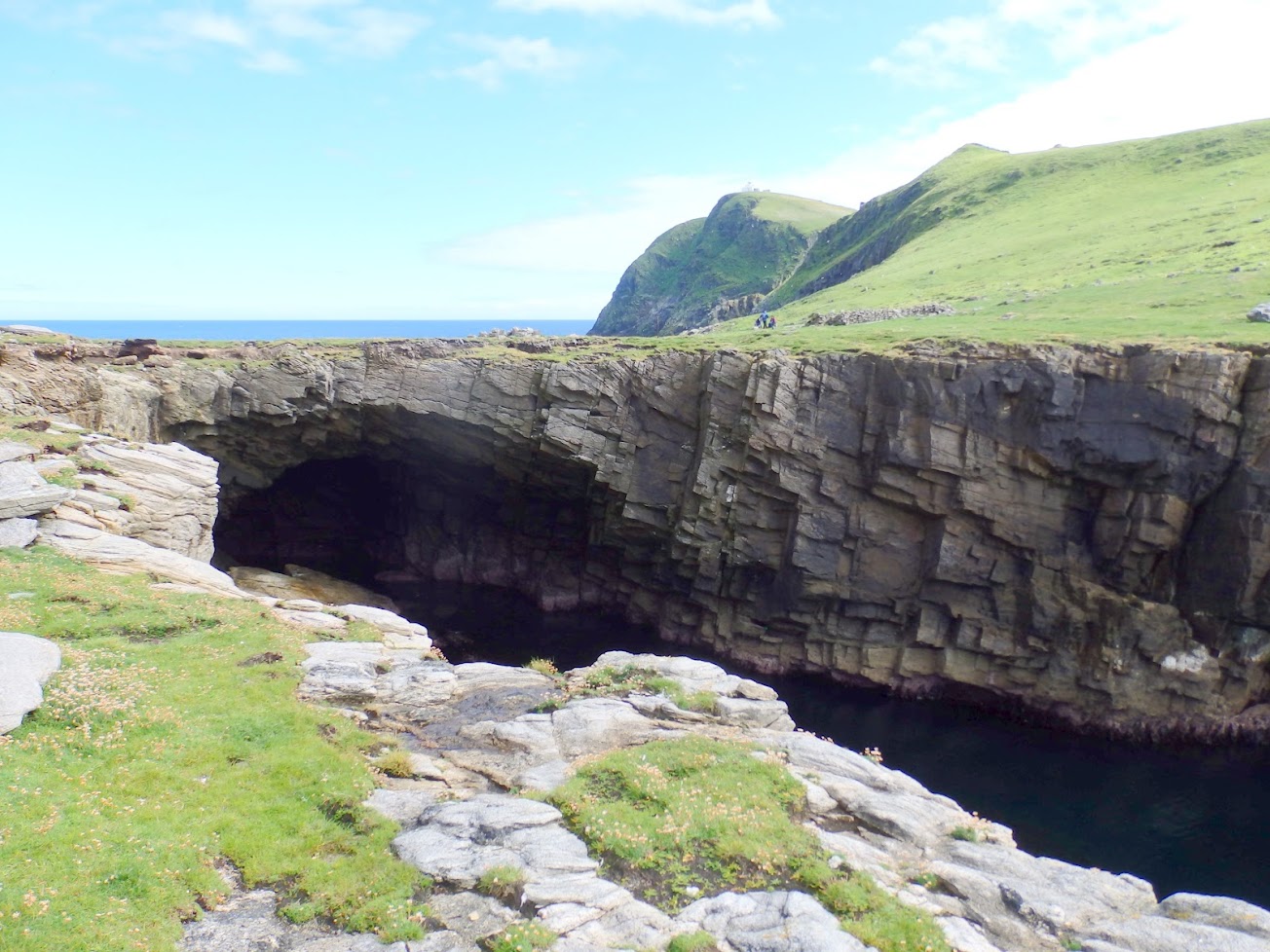

What was that noise? Right, an airplane

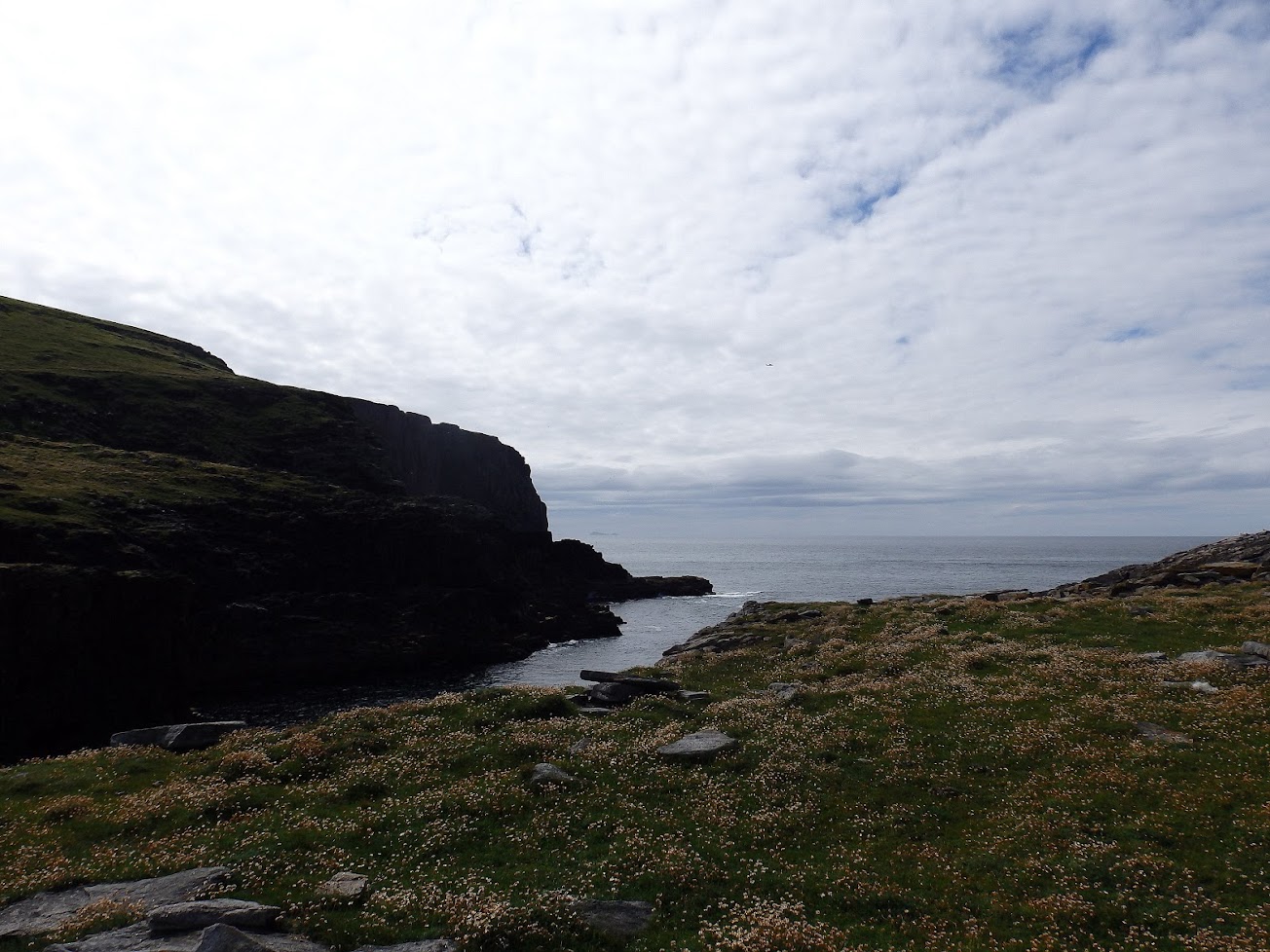

No idea where it was heading but it was a strange intrusion of civilisation in this ancient place. It reminded us that we, too were intruders and that it was time to leave and give the beasts some rest. Our fellow explorers had already gathered at the landing place and we put on our life vests while waiting for the dinghy. Then came the operation of boarding the dinghy without falling into the sea, managed by all with more or less elegance.

This was us on the dinghy at 4 pm and all of a sudden, the sky became overcast and another thing we came to notice: A swell had developed and we were getting quite a lot of seaspray on the short way out to the Lochlann. Back on board I took a few pictures of the broken cliff face before we waived goodbye to North Rona.
The broken cliff where the puffins roam:


Already on the south face of Toa Rona, a few impressive clefts and stacks:




As promised, another shot or three of the village and the lazybeds:



Bye, Rona


We idled a few moments in the south of Rona where the steward served us some hot tea. Then we "set sail" or rather motor down south. The sea had got a bit bumpy and the first hour of the trip was, at least from the landlubber's perspective, quite rough. Luckily we had taken sea sickness tablets in the morning so the pick nick stayed where it belonged

After an hour or so, the sea calmed down a bit but the weather got worse and worse (so no pictures). Four hours later, at around 8:30 pm, we reached Miavaig safely but the rain started to pour properly now. We said goodbye to the crew and the other passengers (at least to those we spoke a few words to or had a wee blether with) and then drove down to Scarista in pouring, cold rain at almost zero sight. At 10:30, we were lucky to be at our cottage and get a peat fire going, have a bite and then sink in our comfortable beds with a wealth of great memories of what had been our greatest adventure in the Hebrides.
So what are my thoughts a few weeks later? North Rona is an absolutely great island. Probably more something for the connoisseur having done his homework than for the tourist looking for an easy afternoon of good fun.
How is Rona compared to its better known sister St Kilda? Well, the cliffs are lower, the village is more ruined and it is overall less impressive. But it has St Ronan's Chapel and it is even remoter. In other words, if St Kilda is Disneyland, North Rona is Eurodisney - it has roughly the same attractions but far less visitors. Get the picture?
